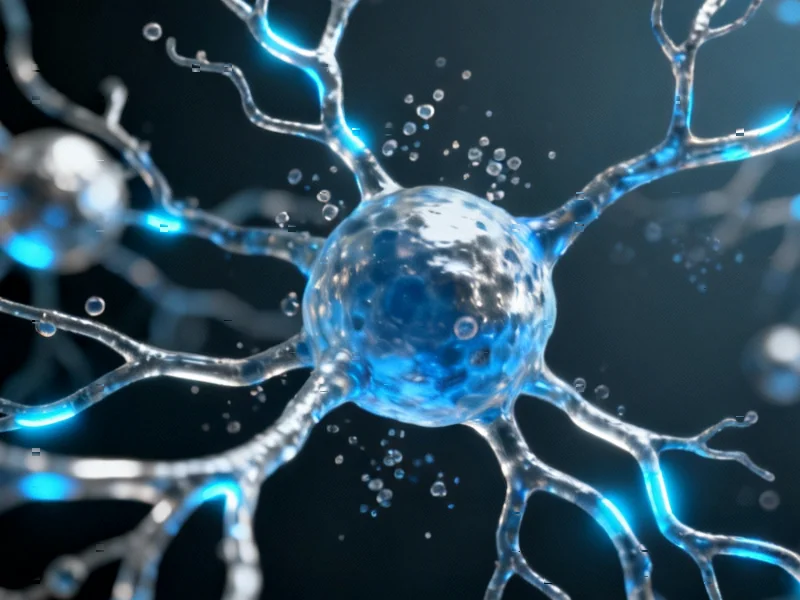Revolutionizing Cancer Therapy with Commensal Bacteria
In a groundbreaking development in cancer immunotherapy, researchers have discovered that a specific strain of Staphylococcus epidermidis could significantly enhance the body’s ability to fight melanoma. The innovative approach, centered around the bacterial strain AIT01, represents a paradigm shift in how we might leverage our body’s natural microbial companions to combat aggressive cancers.
Table of Contents
- Revolutionizing Cancer Therapy with Commensal Bacteria
- The Science Behind Bacterial Immunotherapy
- Activating Multiple Arms of the Immune System
- Systemic Delivery and In Vivo Validation
- Impressive Anti-Tumor Effects in Melanoma Models
- Combination Therapy Potential and Clinical Implications
- Future Directions and Safety Considerations
The Science Behind Bacterial Immunotherapy
The research focuses on AIT01, a strain of Staphylococcus epidermidis that naturally resides on human skin. Unlike traditional treatments that directly target cancer cells, this approach works by supercharging the immune system’s natural defenses. Researchers developed both bacterial lysate (broken-down bacterial components) and culture supernatant (the liquid medium in which bacteria were grown) formulations, opting against using live bacteria due to safety concerns about potential sepsis., as comprehensive coverage
Laboratory experiments demonstrated remarkable effects on immune cell viability. When splenocytes (immune cells from the spleen) were exposed to AIT01 lysate, their viability increased dramatically—reaching up to 178% of normal levels after just six hours of exposure. Even more impressively, after 24 hours, viability soared to over 250% across all tested concentrations, showing a clear dose-dependent relationship., according to related news
Activating Multiple Arms of the Immune System
The true power of AIT01 lies in its ability to activate diverse components of the immune system simultaneously. Flow cytometry analysis revealed significant increases in several crucial immune cell populations:
- Dendritic cells increased from 1.83% to 3.34%—these are the immune system’s “antigen presenters” that activate tumor-specific T cells
- Natural Killer (NK) cells surged from 0.87% to 3.67%—these are frontline defenders capable of directly destroying tumor cells
- γδ T cells reached 8.58%—a specialized population known for their cytotoxic anti-tumor capabilities
Perhaps most importantly, the treatment enhanced the functional capacity of these immune cells. NK cells exposed to AIT01 lysate showed significantly increased production of interferon-γ and perforin—two critical molecules involved in destroying cancer cells., according to technology trends
Systemic Delivery and In Vivo Validation
Moving beyond laboratory studies, researchers tested systemic delivery methods in animal models. Both intraperitoneal and intravenous administration routes proved effective, with intraperitoneal injection showing particular promise for inducing systemic immune-boosting effects. When compared to SE28 (another Staphylococcus epidermidis strain used for similar purposes), AIT01 demonstrated superior performance across multiple parameters., according to industry news
The treatment significantly increased CD8 T cells (44.68% vs 37.34% in controls)—the “killer” T cells essential for eliminating cancer cells. Simultaneously, various innate immune cells showed substantial increases, including monocytes (2.89%), dendritic cells (6.06%), macrophages (3.5%), and neutrophils (1.49%). This broad activation across multiple immune cell types suggests a comprehensive immune system enhancement rather than targeting just one component., according to technological advances
Impressive Anti-Tumor Effects in Melanoma Models
The most compelling evidence came from melanoma animal studies, where researchers tested both pre-treatment and post-treatment scenarios. In the pre-treatment approach, animals received AIT01 lysate before tumor implantation, while the post-treatment group received it after tumors became visible.
The results were striking: pre-treated animals showed average tumor weights of just 0.25 grams compared to 0.48 grams in control groups. When researchers reduced the initial tumor burden and used intravenous delivery, the effects were even more pronounced—pre-treated animals had average tumor weights of 0.07 grams versus 1.4 grams in controls.
This timing-dependent effect suggests that AIT01 works best when the immune system is primed before encountering cancer cells, creating a hostile environment that prevents tumor establishment and growth.
Combination Therapy Potential and Clinical Implications
Perhaps most exciting is the potential for combination therapies. When researchers combined AIT01 with anti-PD-1 treatment (a common immunotherapy approach), they observed significantly enhanced melanoma growth inhibition compared to either treatment alone. This synergy suggests that AIT01 could complement existing immunotherapies, potentially making them more effective while allowing for lower doses and reduced side effects.
The implications for cancer treatment are substantial. Unlike many current immunotherapies that target specific immune checkpoints, AIT01 appears to work through broader immune system activation. This could make it effective against tumors that have developed resistance to more targeted approaches.
Future Directions and Safety Considerations
While the results are promising, several important questions remain. Researchers used bacterial lysates rather than live bacteria specifically to avoid potential safety issues, particularly the risk of sepsis. This formulation approach maintains the immune-boosting properties while minimizing risks associated with introducing live bacteria into the bloodstream.
Future research will need to address optimal dosing schedules, potential side effects, and whether similar effects can be achieved in human patients. The researchers also plan to investigate whether AIT01 could be effective against other cancer types beyond melanoma.
This innovative approach represents an exciting frontier in cancer immunotherapy—harnessing the power of our body’s natural microbial inhabitants to fight one of humanity’s most challenging diseases. As research progresses, bacterial immunotherapies like AIT01 could potentially transform how we treat cancer, offering new hope to patients for whom current treatments have proven insufficient.
Related Articles You May Find Interesting
- Kirigami-Inspired Stretchable Thermoelectric Generator Breaks New Ground in Flex
- New Research Reveals TDP-43’s Critical Role in Neuronal Health Through RNA Proce
- Cancer Study Reveals How Jumping Genes on Extrachromosomal DNA Drive Tumor Growt
- New RNA Methylation Model Predicts Liver Cancer Survival and Treatment Response
- Unlocking Water Purification Potential: How Modified Lignin Transforms Nitrate R
This article aggregates information from publicly available sources. All trademarks and copyrights belong to their respective owners.
Note: Featured image is for illustrative purposes only and does not represent any specific product, service, or entity mentioned in this article.



